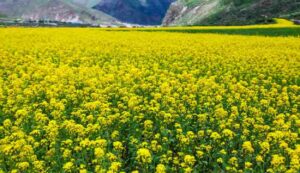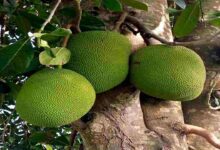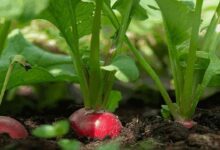Mustard cultivation: If these symptoms are seen in mustard in the harsh cold, then follow these tips immediately
Mustard cultivation: In Uttar Pradesh, the temperature has begun to drop quickly. In several places, the temperature has risen to 5 degrees Celsius due to the current circumstances. Crops are being harmed by the growing cold wave. Cold may have an impact on a variety of crops, such as potatoes and mustard. Since mustard is regarded as the primary oilseed crop grown during the Rabi season, farmers who grow it are becoming more concerned about the growing cold.

However, the danger of illness in mustard crops also rises during this season because of fog and frost. Additionally, in some regions, excessive levels of saline in the soil or salty water may cause diseases in mustard crops. Therefore, let us know from agricultural specialists what illnesses affect mustard crops and how to avoid them.
The cold may be lethal.
The officer-in-charge of the State Agriculture Center Shivgarh in Raebareli district, Shiv Shankar Verma (BSc Ag Dr. Ram Manohar Lohia Avadh University Faizabad), who has ten years of agricultural experience, claims that the mustard crop is killed by the winter’s temperature drop as well as by persistently high temperatures, frost, and fog. Farmers should take the required steps to stop this from happening so they don’t suffer any losses.
These illnesses are a possibility.
Shiv Shankar Verma told the media that the mustard crop is very susceptible to Alternaria blight, white rust, blight disease, and powdery mildew disease.
How to avoid it
On the recommendation of agricultural specialists, farmers should use pesticides to avoid certain illnesses. For various issues like this, multiple approaches may be used.
1. Blight of Alternaria:
Signs and symptoms
Brownish-black dots on leaves, stems, and pods that are rounded or irregular.
Spots have a halo of yellow.
As the sickness worsens, the leaves begin to fall.
Avoidance:
Apply 2.5 g of Mancozeb 75% WP per liter of water to the crop.
To keep the crop’s airflow intact, plant at the right distance apart.
2. White Rust:
Signs and symptoms
Leaves have white blisters on the underside.
White spots on pods and stems.
blossom deformation and pod growth retardation.
Avoidance:
Apply 2 g/liter of water containing Metalaxyl 8% + Mancozeb 64% WP.
3. Blight
Signs and symptoms
The top side of the leaves has yellow dots.
fungal signs on the lower leaf surface that are white-brown.
indications of crop growth retardation.
Avoidance:
To shield the crop from fog and frost, irrigate it.
Use two grams of azoxystrobin or dimethomorph per liter of water.
4. Mildew powder
Signs and symptoms
fungus on leaves and stems that is white and powdery.
Leaves fall and wither.
Plants deteriorate.
Avoidance:
Apply 2–3 grams of sulfur per liter of water (80% WP).
Apply fungicides when the illness is still in its early stages.

